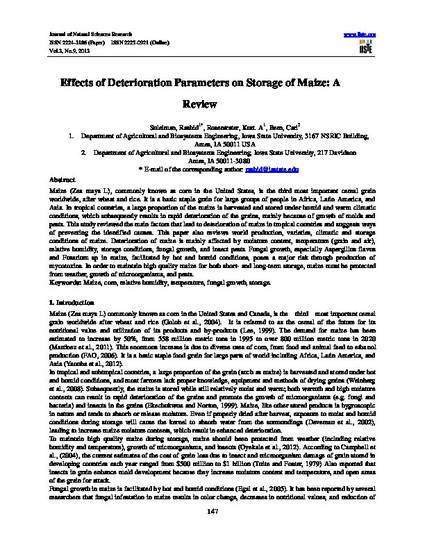
Maize (Zea mays L), commonly known as corn in the United States, is the third most important cereal grain worldwide, after wheat and rice. It is a basic staple grain for large groups of people in Africa, Latin America, and Asia. In tropical countries, a large proportion of the maize is harvested and stored under humid and warm climatic conditions, which subsequently results in rapid deterioration of the grains, mainly because of growth of molds and pests. This study reviewed the main factors that lead to deterioration of maize in tropical countries and suggests ways of preventing the identified causes. This paper also reviews world production, varieties, climatic and storage conditions of maize. Deterioration of maize is mainly affected by moisture content, temperature (grain and air), relative humidity, storage conditions, fungal growth, and insect pests. Fungal growth, especially Aspergillus flavus and Fusarium sp in maize, facilitated by hot and humid conditions, poses a major risk through production of mycotoxins. In order to maintain high quality maize for both short- and long-term storage, maize must be protected from weather, growth of microorganisms, and pests.
Available at: http://works.bepress.com/cjbern/43/

This article is from Journal of Natural Sciences Research 3 (2013): 147–165.